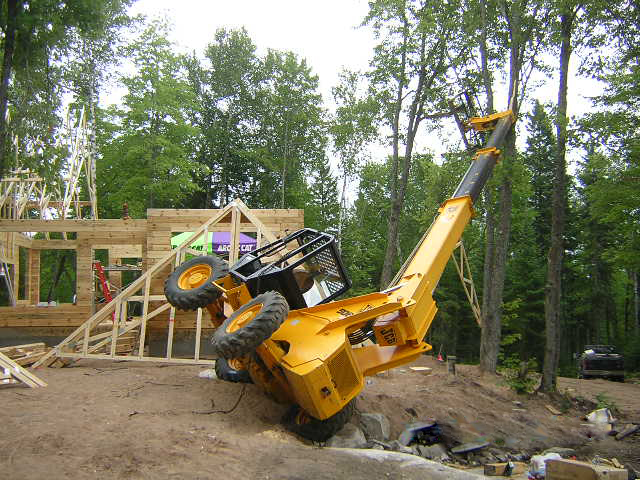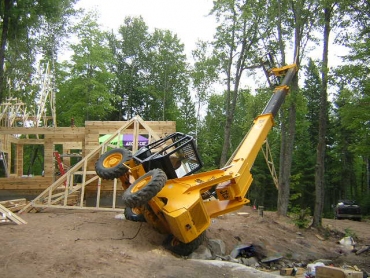Telehandlers are the workhorses of industry across the United Kingdom. From construction yards to warehouses, shipping yards to farms, they provide countless companies with hours of service moving materials and pallets on almost any terrain.
As with any industrial vehicle however, operating a telehandler is inherently risky, particularly if the correct procedures are not in place. Just last year, a recycling firm was fined over £200,000 after an employee was struck by a reversing telehandler, which was deemed to have occurred as a result of a lack of suitable controls. The company was found guilty of breaching Section 2 of the Health and Safety at Work Act 1974 and was fined accordingly.
It is essential that companies look carefully at their sites and workplaces and ensure the necessary controls are in place to prevent such accidents occurring. Here are five tips for doing just that.

1. Separate telehandlers and pedestrians
The first and most effective way of prevent accidents such as the one at the recycling firm is to simple separate pedestrians and telehandlers wherever possible. Pedestrians, particularly visitors to your site, should be kept away from operational telehandlers at all times by using designated walkways and ensuring everyone is aware that telehandlers are operating on site.
Moreover, work areas should be cleared of pedestrians and clearly marked in order to reduce the risk of a pedestrian unwittingly straying into the operational area of a telehandler.
Finally, before each lift of manoeuvre is carried out, the operator should check the surrounding areas for pedestrians. Note, this may involve getting out of the cab to check to the rear of the telehandler.
2. Ensure operators are well trained
Telehandler hire is one of the most popular ways companies access these machines, meaning they are present onsite for only short periods of time. As a result, some firms do not have an adequately trained member of staff to operate a telehandler and the job can fall to someone without the necessary knowledge and prowess.
This is dangerous. All operators should be well versed in safe telehandler operation and be fully aware of industry best practises. Even if your firm is only leasing a telehandler for a short period of time, it is imperative to ensure its operators are suitable trained.
3. Identify and remove potential hazards
Before each lift is carried out potential hazards should be identified and removed (wherever possible) from the area of operation. Where this is impossible, for example in the case of an uneven terrain, then steps should be taken to mitigate the risk of an accident or injury. Stabilisers could be used in the case of the uneven terrain, for example.
Potential hazards include falling loads, overhead power cables, unstable or uneven terrain. Where hazards cannot be removed or at least mitigated the lift should not be carried out.
4. Plan each lift before execution
Again, before each lift is carried out a feasibility assessment should be undertaken and the lift should be planned accordingly. This includes consulting the telehandler’s load capacity charts, which can be found in the user manual, to ensure the load being lifted can be done safely at the required boom extension.
Moreover, a clear path should be marked between the pick-up area and the area which the load will be set down. As mentioned, pedestrians should be clear from this area to reduce the risk of collision.
Before any work is carried out a risk assessment should be carried out in accordance with the Health and Safety at Work Act 1974.
5. Supervise lifts
Finally, all lifts should be supervised by a competent person who is fully versed in the principles of safe telehandler operation. He or she should have taken part in the aforementioned risk assessments and be aware of the hazards that have been identified.
The supervisor should also fully understand the task that is being carried out and ensure it is done so in a safe and controlled manner. They should be able to identify any bad practise and communicate with the operator accordingly if and when it occurs.
By following these tips a firm can hope to dramatically reduce the risk of an incident such as the one that occurred at the recycling firm. You can find more information in the pages of the Health and Safety at Work Act 1974, or from your local telehandler dealer.

